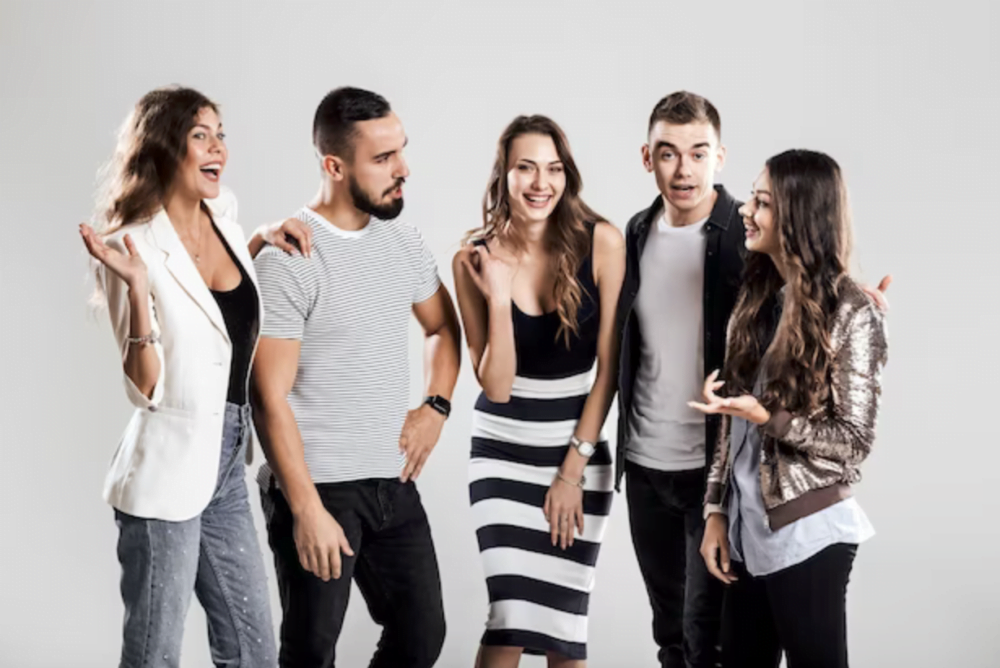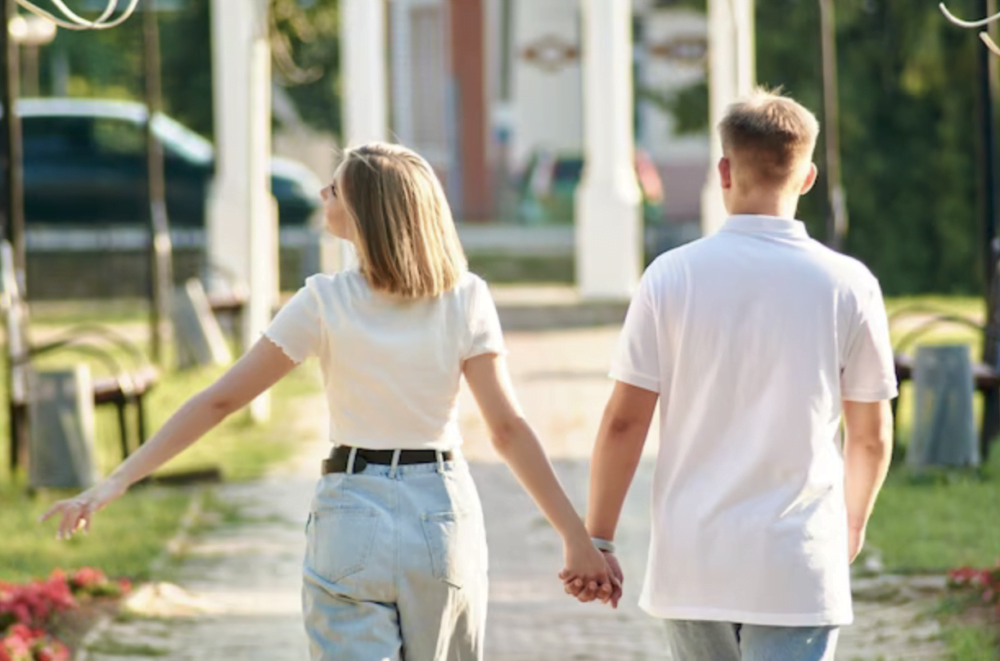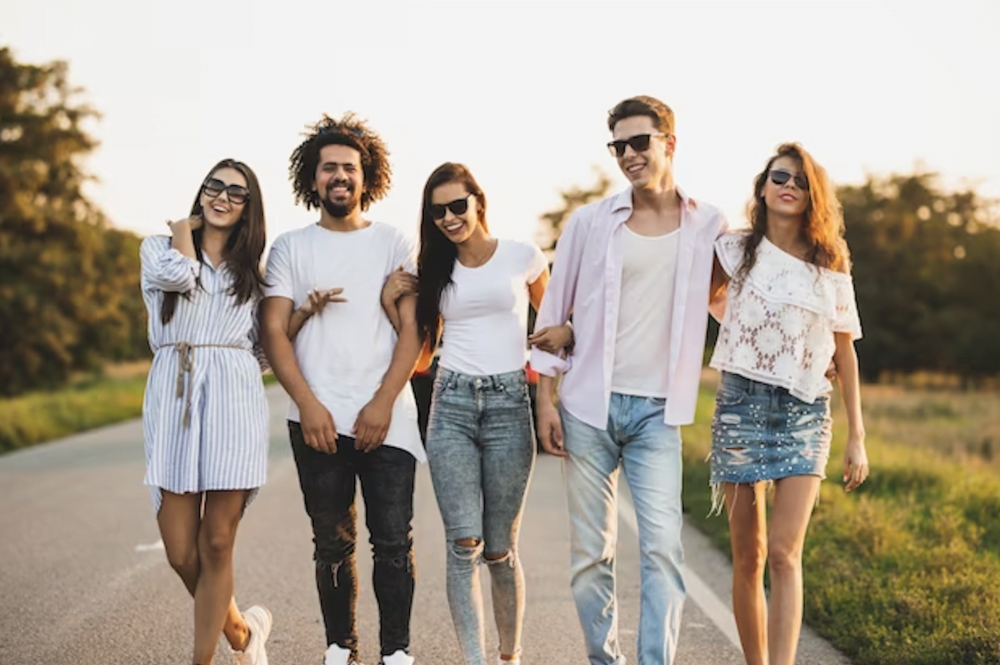Meybe top is not just an online dating app. This is an inclusive community where everyone, regardless of their sexual orientation, can find love, friendship and support.
Bisexual people is an important part of our community. Bisexuality is a natural and valid sexual orientation, just like heterosexuality or homosexuality. Bisexual people can be attracted to both men and women.
Bisexual relationships can be as varied as any other. They can be monogamous or polygamous, short-term or long-term, based on love, friendship, a common interest, or anything else.
It is important to understand that bisexual relationships are relationships just like any other.
They require love, respect, trust and support.
If you are bisexual and want to build a relationship, Maeby Top can become your faithful assistant.
Here are some tips to help you:
- Be honest with yourself and others. Don't be afraid to be yourself and be open about your sexuality.
- Look for a partner who will respect your sexuality. You need someone who will love you for who you are and won't try to change you.
- Be prepared to face misunderstanding and discrimination. Unfortunately, bisexual people can still face prejudice.
But remember that you are not alone!

Maybee Top is the place where you can find:
- Support and understanding. Here you can connect with other bisexual people, share your stories and experiences, and get advice and help.
- Friends and partners. Maybee Top is a great place to meet new people, make friends and build relationships.
Maybee Top is your place in the world of online dating.
Join us today and find your love, friendship and support!
Read also:
Maybee Top has helped many bisexual people find love.
Here are some success stories:
Love story of Anastasia and Ksenia:
Anastasia and Ksenia met on the dating site Maybe Top. Both girls were bisexual and were looking for serious relationships. Online communication quickly grew into a strong friendship based on common interests and mutual understanding.
Soon the friendship blossomed into true love. The girls started dating, and their feelings became stronger every day.
Today, after two years of marriage, Anastasia and Ksenia cannot imagine their life without each other. They make plans for the future, dream of a wedding and a happy family life.
Andrey and Maxim:
Andrey and Maxim are two bisexual men who found each other on Maybe Top. Both were fond of sports and loved to travel. After starting to communicate online, they quickly became friends. Having decided to meet in reality, they immediately found a common language. They have been dating for over a year now and are planning a trip around the world together.
Irina and Olga:
Irina and Olga are bisexual women who met on Maybe Top. Both were looking for a person with whom they could share their lives. Once they started communicating online, they quickly realized that they had a lot in common. They started dating and soon fell in love. They have been together for more than three years and are planning to start a family.
These are just a few examples of how Maybee Top has helped bisexual people find love.
If you are bisexual and looking for love,
Maybee Top is a great place for you.
Guide to LGBTQ+ terminology:
LGBTQ+ (LGBTI, LGBT):
It's an acronym that stands for lesbian, gay, bisexual, transgender, and queer (the Q, which can stand for either "questioning" or "queer," a term used for those who don't conform to traditional norms of sexuality and gender identity). The "+" includes other identities and orientations that don't fit into the main categories.
- Sexual orientation:
- It is a term that describes who a person feels sexually attracted to. Some main categories include heterosexuality (attraction to people of the opposite sex), homosexuality (attraction to people of the same sex), and bisexuality (attraction to people of both sexes).
- Gender Identity:
- It is a term that describes how a person defines themselves in the context of gender. Some examples include men, women, non-binary (those who do not identify as both male and female), transgender (those whose gender identity does not match their assigned sex at birth), and others.
- Transgender:
- This is a condition where a person's gender identity does not match their assigned sex at birth. Transgender people may take various measures to live in accordance with their gender identity, including medical transgender therapy and/or surgical procedures.
- Intersex:
- It is a term used to describe people who have physiological characteristics that do not fit the typical definitions of male or female.
- Asexuality:
- This is an orientation in which a person does not experience sexual attraction or feelings of desire for other people.
- Coming out:
- This is the process of a person disclosing their sexual orientation, gender identity, or other aspects of their personality that may be hidden or undervalued in society.
- Sheltering:
- It is the practice of accepting a safe, supportive and trusting relationship with an LGBTQ+ identified person who has not yet come out.
This is just a small overview of some of the terms used in the LGBTQ+ community. It is important to remember that terms and their meanings can evolve and change over time, and that each person may have their own unique definitions and experiences.

Here are some examples:
- Anya – trans woman. Despite the fact that she was assigned male gender at birth, Lena always felt like a woman.
- Maksim – non-binary person. He feels neither male nor female and prefers to be addressed by his first name or gender-neutral pronouns.
- Dasha – asexual. She is not sexually attracted to other people, but may experience romantic feelings.
- Kirill – pansexual. He is capable of loving people of any gender.
- Lena - intersex person. She has gender characteristics that do not fit typical definitions of male or female.
It's important to remember that these are just a few examples. The gender spectrum is diverse, and there are many other ways to express gender identity.
Each person is unique and we should respect each other's gender identity.
These are just some of the LGBTQ+ terms.
There are many other terms that are used to describe sexual orientation and gender identity.
It is important to respect people and use the terms they prefer.
For a more in-depth look at LGBTQ+ terminology:
- GLAAD Media Reference Guide - Transgender: https://www.glaad.org/reference/transgender
- Human Rights Campaign - LGBTQ+ Glossary of Terms: https://www.hrc.org/resources/glossary-of-terms
Remember that the LGBTQ+ community is a diverse and diverse community.
It is important to be inclusive and use respectful language.


